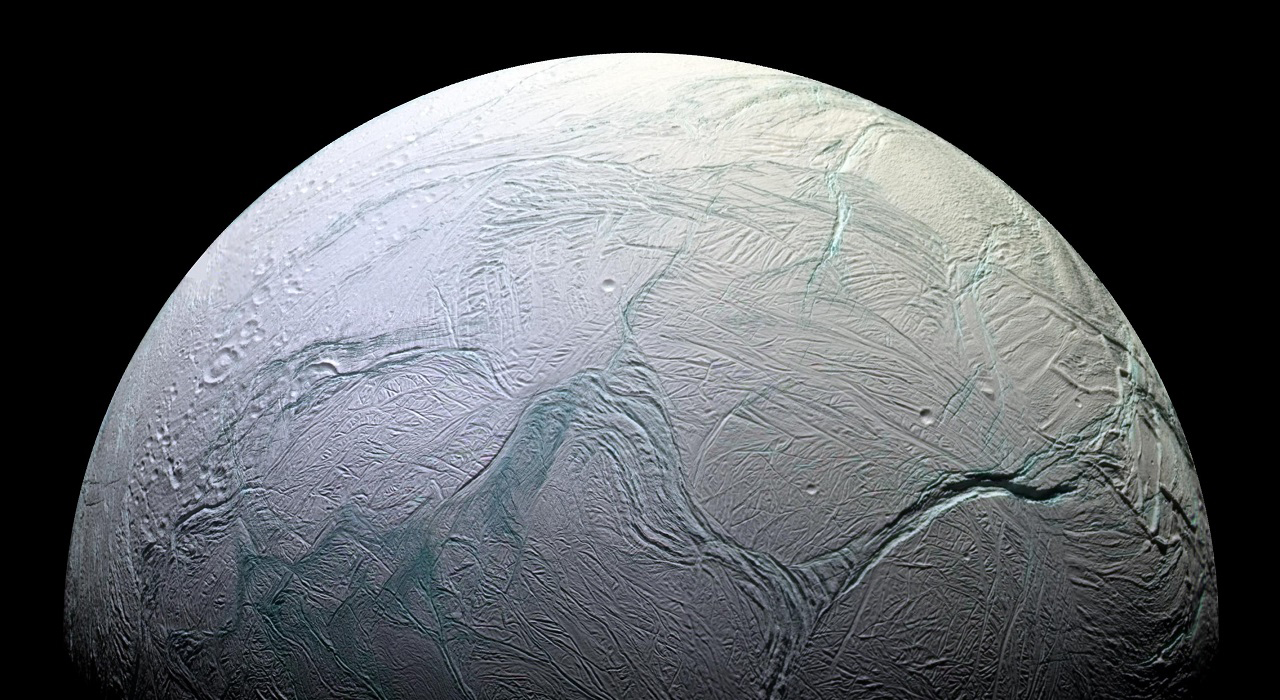Frozen Earth in 'Snowpiercer' Is a Grim (and Possible) Future for Our Warming Planet
"First, the weather changed."

NEW YORK — In the not-so-distant future, humanity's last survivors ride a vast, never-stopping train across a frozen Earth. The fictional world of "Snowpiercer," a new TV series airing on TNT in early 2020, is a grim one. A botched attempt to reverse runaway global warming has left Earth blanketed in ice and snow. Only a few thousand people — some wealthy and privileged and many desperate and wretched — survive, saved by a billionaire's pet project: a beast of a supertrain (named Snowpiercer) that extends for miles, equipped to ride the rails until Earth is habitable again.
The series is based on the 1982 French graphic novel "Le Transperceneige," as was the 2013 movie "Snowpiercer," directed by Bong Joon-Ho.
At New York Comic Con on Oct. 5, the show's cast and creators presented a glimpse of this broken Earth, the strange "ark" that barrels ceaselessly onward and the surviving humans who ride onboard. TNT's version of the tale unfolds seven years after the global climate catastrophe and the train's departure, when untold millions of people (not to mention all of Earth's animals and plants) were left behind to die.
Related: Doom and Gloom: Top 10 Post-Apocalyptic Worlds
Bleak as this story is, it represents "a logical extension of what happens when you continue to ignore science and you're forced to make a rash decision about how to save your planet," said actor Daveed Diggs, who plays ex-homicide detective Andre Layton on the show.
That dire scenario is especially relevant today. Unprecedented and human-driven climate change is raising sea levels; erasing glaciers and sea ice; and spawning dangerous wildfires, widespread droughts and intense heat waves. In fact, recent climate-related news fueled a sense of urgency for Graeme Manson, executive producer and showrunner of "Snowpiercer."
"It lit a fire under me to want to tell this story now," Manson told Live Science.
Sign up for the Live Science daily newsletter now
Get the world’s most fascinating discoveries delivered straight to your inbox.

Global ice ages have frozen Earth in the past. But with accelerating climate change heating things up, is a planet-wide deep freeze even possible anymore? And could trying to artificially cool Earth save the planet, or would it trigger a cascade of consequences that produce a frozen wasteland like that in "Snowpiercer" — or something that's even worse?
Between 750 million and 580 million years ago, three to four dramatic ice ages froze nearly all of Earth's surface for about 10 million years at a stretch. During these periods of intense cold, average global temperatures plummeted to minus 58 degrees Fahrenheit (minus 50 degrees Celsius); these frigid conditions earned the planet the nickname "snowball Earth."
Lesser ice ages emerge about once every 120,000 years, driven by shifts in Earth's orbit and changes in our proximity to the sun, Robin Bell, a professor at Columbia University's Lamont-Doherty Earth Observatory (LDEO) in New York City and president of the American Geophysical Union (AGU), told Live Science in an email.
"We should be having one [ice age] soon, except for our ongoing experiment in atmospheric chemistry," said Bell, referring to fossil fuel burning that pumps quantities of greenhouse gases like carbon dioxide (CO2) into Earth's atmosphere, accelerating warming. A future ice age could still happen, but only if atmospheric CO2 is drastically reduced, Maureen Raymo, a LDEO paleoclimatologist and research professor, told Live Science in an email.
Could artificially cooling the planet through geoengineering trigger an ice age or create a snowball Earth? "Physically, it's not inconceivable," said Gavin Schmidt, a climatologist and director of the NASA Goddard Institute for Space Studies in New York City.

Schmidt outlined one such geoengineering method. "If you put stuff into the atmosphere that's white and reflective, that reduces the amount of solar radiation coming in and makes the planet colder," he told Live Science. "It's similar to what happens when big volcanoes erupt."
For example, in 1991, the eruption of Mount Pinatubo in the Philippines spewed 20 million tons of sulfur dioxide into the stratosphere, causing global temperatures to drop by about 1 degree F (0.5 degrees C) from 1991 to 1993, according to the U.S. Geological Survey.
Related: 8 Ways Global Warming Is Already Changing the World
Removing excess CO2 from the atmosphere could also cool the planet; one way to do that could be to infuse the ocean with nutrients to encourage the growth of phytoplankton, microscopic marine algae that take up CO2 during photosynthesis.
"They would draw down CO2 from the atmosphere that would sink into the bottom of the ocean," Schmidt said. "Then, everything would be back to normal."
But take these procedures too far — block too much solar energy or siphon off too much atmospheric CO2 — and the result could be a global deep freeze, Schmidt said. Current atmospheric CO2 levels are about 410 parts per million, while preindustrial levels hovered at around 280 ppm, Schmidt said. Dip down to 180 ppm, and "then you're in ice age territory," he said.
What's more, there are serious ethical concerns about launching such drastic actions to reset Earth's climate.
"If we didn't live here, it'd be much easier to play with the planet's climate, but the consequences involve potentially billions of people," Schmidt said. "We can't even get a global agreement to reduce CO2. So the chances that we'd have a global agreement to put stuff in the atmosphere and change the climate seem very slim."
Persistent hope
For Snowpiercer's passengers, the chance to avert the worst impacts of climate change is long gone — "this is a story about what happens after it's too late," Diggs told Live Science. Yet, in spite of everything, the characters still find room for hope.
"Hope is inherent through living, continuing on," actor Steven Ogg, who plays the rebellious gang leader, Pike, told Live Science. "If you're waking up every day, that means, inherently, you're living with hope."
"You may think, 'Well, I'll die before I ever see the world go back to normal,'" said Lena Hall, whose character, Miss Audrey, manages the train's brothel and cabaret. "But I don't want to die now. I want to live and pass along what I know, and hope that the next generation, maybe they'll see the change," Hall said.
As dire as the real world's climate crisis may seem, hope lingers here as well, in ongoing global actions to eliminate fossil fuel use and establish strategies for adapting to a warming world. But politicians and leaders need to act quickly, or a scenario as dire as that in "Snowpiercer" might be closer than we think, said actor Alison Wright; her character, Ruth Wardle, handles hospitality on the train.
"It's not that much of a stretch, and it's not a fantasy situation anymore," Wright said. "Our story is just one possible result of what could happen."
"Snowpiercer" will debut on TNT in the spring of 2020; check local listings.
- Photographic Proof of Climate Change: Time-Lapse Images of Retreating Glaciers
- 6 Unexpected Effects of Climate Change
- The Reality of Climate Change: 10 Myths Busted
Originally published on Live Science.


Mindy Weisberger is an editor at Scholastic and a former Live Science channel editor and senior writer. She has reported on general science, covering climate change, paleontology, biology and space. Mindy studied film at Columbia University; prior to Live Science she produced, wrote and directed media for the American Museum of Natural History in New York City. Her videos about dinosaurs, astrophysics, biodiversity and evolution appear in museums and science centers worldwide, earning awards such as the CINE Golden Eagle and the Communicator Award of Excellence. Her writing has also appeared in Scientific American, The Washington Post and How It Works Magazine. Her book "Rise of the Zombie Bugs: The Surprising Science of Parasitic Mind Control" will be published in spring 2025 by Johns Hopkins University Press.









